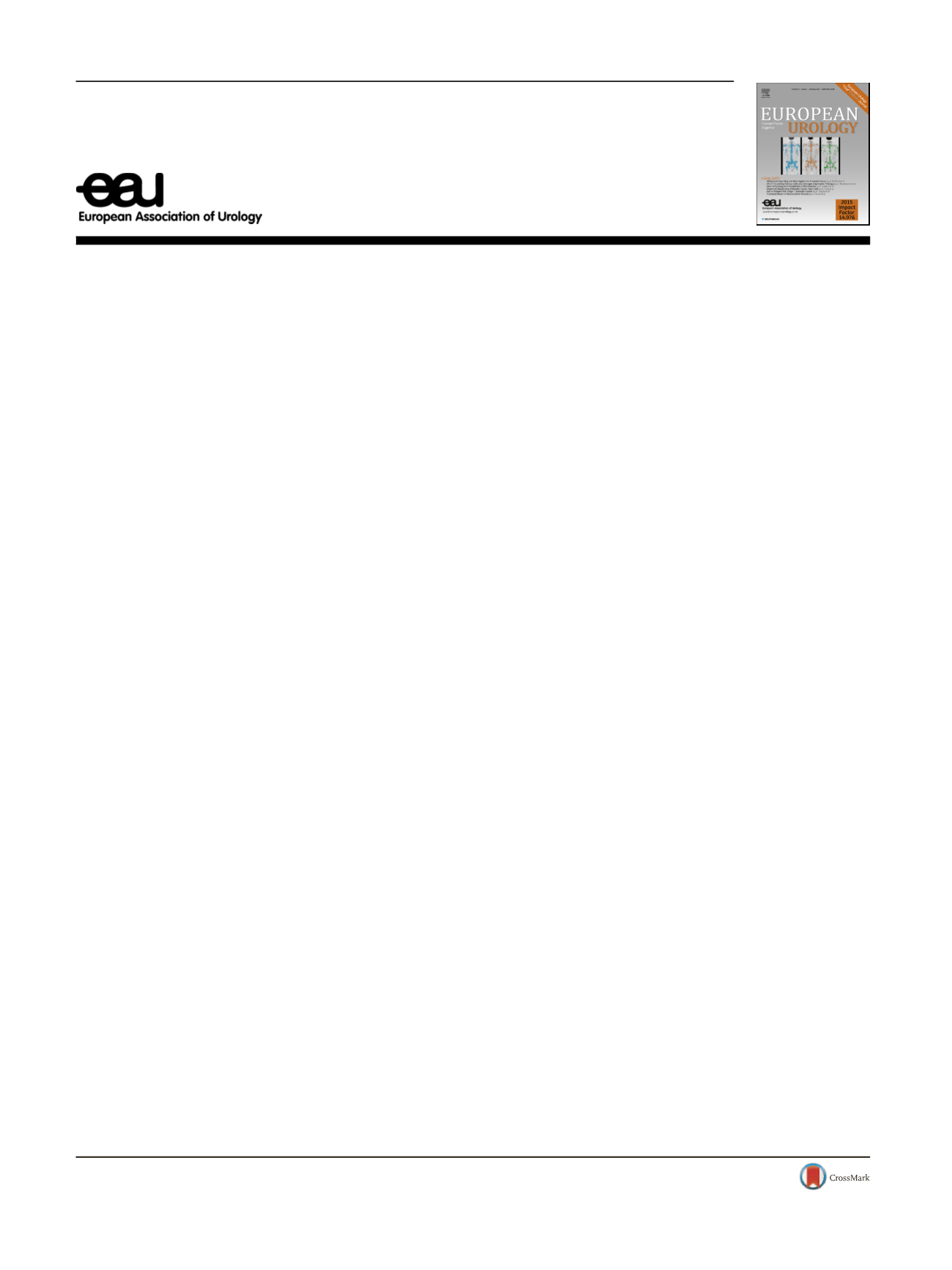

Platinum Priority
–
Editorial
Referring to the article published on pp. 974
–
983 of this issue
Time to Focus on the Rare
—
Encouraging Progress in the
Management of Non
–
clear Cell Renal Cell Carcinoma
Archie
[1_TD$DIFF]
Fernando
*The Urology Centre, Guy
’
s and St Thomas
’
Hospital, London, UK
Our misconception that renal cancer is a single disease
entity that should be managed the same surgically and
medically has hampered
[5_TD$DIFF]
our progress in the management of
non
–
clear cell renal cell carcinoma (nccRCC). The majority
of our advances in the management of renal cancer have
been in the realm of clear cell renal cell carcinoma (ccRCC).
We have made relatively few strides in the non
–
clear cell
subtypes. Once metastatic, nccRCC is characterised by
resistance to traditional systemic therapies and poor
survival
[1 – 3] .The European Association of Urology (EAU) Renal Cell
Carcinoma Guideline Panel conducted a systematic review
of the data available on the systemic treatment of advanced
nccRCC
[4] .The panel concluded that there was little
evidence that nccRCCs are less responsive to mammalian
target of rapamycin inhibitors and vascular endothelial
growth factor
–
targeted therapy than ccRCC, and made a
weak recommendation that sunitib may be marginally
better than everolimus for the systemic treatment of
advanced nccRCC
[4] .As a follow-on from this, in this
month
’
s issue of
European Urology
, Giles et al
[5]make a
compelling
“
call to action
”
for increased collaboration and
research into nccRCC. They preferentially use the term rare
kidney cancer (RKC), which they deem more inclusive than
nccRCC. The authors highlight three key shortcomings of
the current lines of investigation into RKCs and make
recommendations for improvement.
First, Giles et al
[5]highlight that the current approach of
considering all RKCs to be one disease is flawed. RKCs
encompass over a dozen histological entities that vary
widely in their prognosis and response to treatments
[6] .The strategy of continuing to consider them one disease
is likely to lead us in to the same pitfalls as considering all
RCCs to be the same, and should be abandoned. We must
assess the different subtypes separately regardless of the
small numbers involved.
Furthermore, we continue to use predominantly histo-
logical criteria rather than molecular/genetic profiling to
classify tumours and target treatment. We now know that
tumours within the same histological class behave and
respond to treatment differently
[4 – 8]. For example,
response rates to foretinib (oral broad kinase inhibitor
targeting MET among other receptors) were 50% in those
with papillary RCC (pRCC) who had germline MET mutation,
compared with 8% in those who did not have the MET
mutation
[7] ,and MET-driven pRCC has significantly better
progression-free survival and overall response rates with
savolitinib (selective MET inhibitor) compared with MET-
independent pRCC (6.2 mo and 18% vs 1.4 mo and 0%;
p
<
0.001)
[8] .We also know that the molecular patterns of
tumours cross histological class boundaries. A comprehen-
sive pan-RCCmolecular analysis by Chen et al
[9]shows that
tumours share greater molecular similarity with tumours
grouped in different histological categories. In the light of
this knowledge, use of histological classification alone
seems inadequate and begs two questions: (1) is our
stringent adherence to established histological boundaries
preventing
[6_TD$DIFF]
advancement in this disease? and (2) are the
overall poor outcomes of systemic treatments because of
the heterogeneity of the population being studied rather
than
“
failure
”
of the drugs? Perhaps we should shift to a
molecular classification of tumours, for example, MET
amplified, VHL altered, SDH deficient, PDL1 expressing, in
addition to the traditional histological subtypes. Molecular/
genetic profiling of tumours prior to inclusion in trials offers
a much more comprehensive way of assessing diagnosis,
E U R O P E A N U R O L O GY 7 2 ( 2 0 17 ) 9 8 4 – 9 8 5available at
www.scienced irect.comjournal homepage:
www.europeanurology.comDOI of original article:
http://dx.doi.org/10.1016/j.eururo.2017.06.040.
* The Urology Centre, Guys and St Thomas Hospital, Great Maze Pond, London SE1 9RT, UK. Tel. +44 207 1887388; Fax: +44 207 1886793.
E-mail address:
archanafernando@hotmail.com . http://dx.doi.org/10.1016/j.eururo.2017.07.0280302-2838/© 2017 Published by Elsevier B.V. on behalf of European Association of Urology.
















